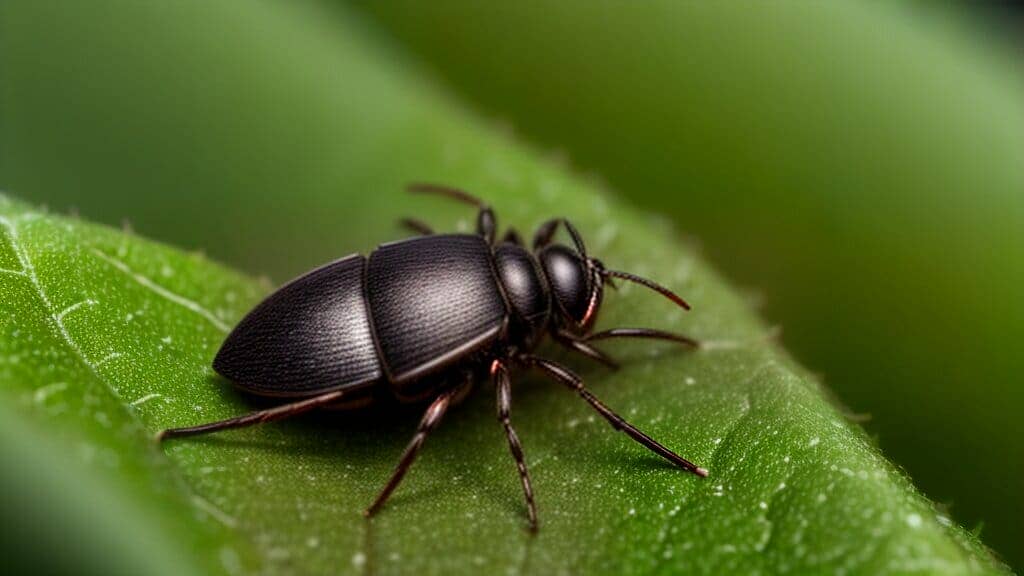Lyme Disease is a bacterial infection transmitted primarily by deer ticks. It can affect various body systems and cause a range of symptoms. High blood pressure, also known as hypertension, is a common condition that can lead to serious health problems if left untreated.
Recent studies have shown a connection between Lyme Disease and high blood pressure, with the infection potentially impacting blood pressure levels and leading to hypertension. It’s important to understand the symptoms of Lyme Disease, as well as the diagnostic and treatment options available for both conditions.
In this article, we will explore the link between Lyme Disease and blood pressure, discuss the diagnostic and treatment options available, and offer tips for managing both conditions simultaneously. Whether you have been recently diagnosed or are simply seeking more information, this article is designed to provide valuable insights and practical guidance.
Key Takeaways:
- Lyme Disease and high blood pressure are connected, and early diagnosis and treatment are crucial for managing both conditions effectively.
- Medical approaches such as antibiotics for Lyme Disease and various blood pressure medications can be effective in managing symptoms.
- Holistic treatments, including natural remedies and lifestyle modifications, can also be beneficial for overall well-being.
- It’s important to seek professional guidance and regularly monitor both Lyme Disease and blood pressure levels to prevent complications.
Understanding Lyme Disease Symptoms
Lyme Disease is caused by the bacterium Borrelia burgdorferi and transmitted through the bite of infected black-legged ticks. It is often associated with a “bull’s-eye” rash, but this occurs in only about 70-80% of cases. Lyme Disease can cause a range of symptoms that affect different parts of the body. Some common symptoms include:
- Joint pain and swelling
- Muscle aches
- Fatigue
- Fever
- Headaches
- Swollen lymph nodes
The symptoms of Lyme Disease can mimic other illnesses, making it difficult to diagnose. Early recognition and treatment of the infection is critical to prevent complications. If left untreated, Lyme Disease can lead to more severe symptoms such as arthritis, heart problems, and nervous system disorders.
Risk factors for Lyme Disease include spending time in wooded or grassy areas, particularly from May to September, as well as having exposed skin. Using insect repellent, wearing long sleeves and pants, and conducting regular tick checks can help reduce the risk of infection.

The Link Between Lyme Disease and High Blood Pressure
Lyme Disease, a bacterial infection typically transmitted through tick bites, can have serious health consequences if left untreated. While the most common symptoms of Lyme Disease include fatigue, muscle aches, and joint pain, the infection can also impact blood pressure levels and potentially lead to hypertension.
Research has found that patients with Lyme Disease may experience changes in blood pressure due to the infection’s impact on the autonomic nervous system, which controls involuntary bodily functions such as heart rate and blood pressure. Specifically, Lyme Disease can cause dysregulation of the autonomic nervous system, leading to fluctuations in blood pressure levels.
These changes in blood pressure may be particularly concerning for individuals who are already at risk for hypertension. If left untreated, high blood pressure can lead to serious health issues such as heart attack, stroke, and kidney disease.

It is important for individuals with Lyme Disease to be aware of the potential impact on their blood pressure and to monitor their levels closely. Regular blood pressure checks and communication with a healthcare provider can help to ensure that any changes or concerns are addressed promptly.
In the next section, we will explore the diagnostic process for Lyme Disease and blood pressure issues.
Diagnosing Lyme Disease and Blood Pressure Issues
Diagnosing Lyme Disease and blood pressure issues can be challenging, as these conditions can present with a wide range of symptoms that may resemble other medical concerns. However, early diagnosis is crucial to prevent complications and improve outcomes.
Healthcare professionals will typically begin with a thorough evaluation of symptoms, medical history, and lifestyle factors. Depending on the results, they may recommend further tests and assessments to confirm the presence of Lyme Disease or blood pressure issues.
| Lyme Disease Diagnosis | Blood Pressure Diagnosis |
|---|---|
| Physical exam and medical history | Physical exam and medical history |
| Enzyme-linked immunosorbent assay (ELISA) test | Blood pressure measurement |
| Western blot test | Additional blood tests |
| Cerebrospinal fluid analysis | Electrocardiogram (ECG) or other tests |
Once a diagnosis has been confirmed, healthcare professionals may prescribe antibiotics for Lyme Disease and various medications for blood pressure control. They may also recommend lifestyle changes and other self-care strategies to manage symptoms and support overall well-being.

Managing Lyme Disease and Blood Pressure: Medical Approaches
If you have been diagnosed with both Lyme Disease and high blood pressure, your healthcare provider may suggest a variety of medical approaches to manage your conditions. It is important to follow their advice and take your medications as prescribed.
Antibiotics are typically used to treat Lyme Disease. Your healthcare provider may prescribe a course of antibiotics to help eliminate the infection. It is important to take the full course of antibiotics, even if your symptoms improve before you finish the medication. This will help ensure that the infection is fully treated and reduce the risk of recurrence.
For high blood pressure, there are several types of medications that your healthcare provider may prescribe. These include:
| Medication type | How it works |
|---|---|
| Diuretics | Helps your kidneys eliminate excess water and salt from your body, which can reduce your blood pressure. |
| ACE inhibitors | Helps relax your blood vessels, which can reduce your blood pressure. |
| Beta blockers | Helps reduce the workload on your heart by slowing your heart rate, which can lower your blood pressure. |
Your healthcare provider will work with you to determine the best medication(s) for your individual needs. They may also adjust your dosages over time to ensure the medications continue to effectively manage your high blood pressure.
Managing Lyme Disease and Blood Pressure: Medical Approaches
In addition to medication, there are other medical approaches that may be used to manage both Lyme Disease and high blood pressure. Your healthcare provider may recommend:
- Frequent checkups to monitor your blood pressure and overall health
- Regular blood tests to monitor your Lyme Disease treatment and ensure the infection is fully treated
- Other medications or interventions, as needed, to manage any additional health issues
Working closely with your healthcare provider to manage your Lyme Disease and high blood pressure is essential for your long-term health and well-being. Always consult with your healthcare provider before making any changes to your treatment plan.

Holistic Treatments for Lyme Disease and Blood Pressure
While medical approaches are important in managing Lyme Disease and high blood pressure, holistic treatments can provide additional benefits and support overall wellness. At Oasis Medical Institute in Tijuana, MX, medical director Dr. Francisco Contreras MD leads an integrative approach that combines traditional medicine with natural remedies and lifestyle modifications.
One key area of focus is nutrition. A diet rich in anti-inflammatory foods can help reduce inflammation caused by Lyme Disease and lower blood pressure levels. Dr. Contreras also recommends supplements such as omega-3 fatty acids, vitamin D, and magnesium to support overall cardiovascular health.

Other holistic treatments that may be beneficial for managing both Lyme Disease and blood pressure include acupuncture, massage therapy, and mindfulness practices such as meditation or yoga. These non-invasive approaches can help reduce stress, improve circulation, and promote relaxation.
It is important to note that while holistic treatments can be helpful, they should not replace medical interventions. Always consult with a healthcare professional and follow their advice for managing Lyme Disease and high blood pressure.
Tips for Managing Lyme Disease and Blood Pressure
Managing Lyme Disease and high blood pressure at the same time can be challenging, but it is possible with the right strategies. Here are some tips to help:
- Stay hydrated: Drinking enough water can help regulate blood pressure and prevent dehydration, which is common in people with Lyme Disease due to increased sweating and fever.
- Follow a healthy diet: Eating a balanced, nutrient-rich diet that is low in sodium can help lower blood pressure and support overall health. Consider consulting a registered dietitian for personalized advice.
- Avoid alcohol and caffeine: These substances can raise blood pressure and interfere with medications used to control Lyme Disease and hypertension.
- Get regular exercise: Physical activity can help improve blood pressure and reduce inflammation, which is a common symptom of Lyme Disease. However, it is important to consult with a healthcare professional before starting any exercise program.
- Practice stress-reducing techniques: Stress can raise blood pressure and exacerbate Lyme Disease symptoms. Meditation, deep breathing, and yoga are all effective stress management techniques to consider.
- Stay on top of medical appointments: Regular check-ups with a healthcare professional can help monitor blood pressure and detect any Lyme Disease complications early on.
Remember that managing both Lyme Disease and high blood pressure requires a holistic approach that includes medical treatment, lifestyle modifications, and self-care practices. By staying informed and proactive, it is possible to live well with these conditions.

Preventing Lyme Disease and Blood Pressure Complications
Complications related to Lyme Disease and high blood pressure can be serious and even life-threatening. It is essential to take preventative measures in order to minimize the risk of developing these complications.
The Link Between Lyme Disease and Complications
Lyme Disease can lead to a variety of complications if left untreated or undertreated. These can include:
- Heart Problems
- Neurological Issues
- Joint Problems
- Chronic Fatigue Syndrome
- Organ Damage
High blood pressure, if left uncontrolled, can also lead to a number of complications, including:
- Heart Attack
- Stroke
- Kidney Damage
- Vision Loss
- Erectile Dysfunction
Prevention Strategies
The best way to prevent complications related to Lyme Disease and high blood pressure is to actively manage these conditions and follow medical advice. This can include:
- Getting prompt and effective treatment for Lyme Disease
- Monitoring blood pressure regularly and taking prescribed medications
- Adopting a healthy lifestyle, including regular exercise and a balanced diet
- Reducing stress and practicing relaxation techniques
- Avoiding smoking and excessive alcohol consumption
- Seeking medical attention immediately if any concerning symptoms arise
By taking these preventative measures, individuals can greatly reduce their risk of developing complications related to Lyme Disease and high blood pressure.

The Role of Exercise in Lyme Disease and Blood Pressure Management
Regular exercise can be beneficial for both individuals with Lyme Disease and high blood pressure. However, it is important to approach exercise with caution and consult with a healthcare professional before starting any new physical activity.
The type and intensity of exercise will depend on the individual’s current level of fitness and overall health. Generally, low impact exercises such as walking, swimming, and cycling are recommended. Strength training can also be useful in building muscle and improving overall cardiovascular health.
Exercise has been shown to reduce inflammation in the body, which can be particularly beneficial for individuals with Lyme Disease. It can also help to lower blood pressure and improve circulation.
It is important to listen to your body and not overexert yourself during exercise. It may be necessary to start with short, low-intensity sessions and gradually increase the duration and intensity over time.
In addition to the physical benefits, exercise can also improve mood and reduce stress levels. Stress has been shown to have negative effects on both Lyme Disease and blood pressure, so incorporating stress-reducing activities such as yoga or meditation can be especially beneficial.

Image source: https://seowriting.ai/32_6.png
Diet and Nutrition for Lyme Disease and Blood Pressure
A healthy diet and proper nutrition are essential for managing both Lyme Disease and high blood pressure. Consuming nutrient-rich foods can help strengthen the immune system, reduce inflammation, and support cardiovascular health.
Firstly, it is important to limit processed foods, refined sugars, and saturated fats, as they can exacerbate inflammation and blood pressure complications. Instead, focus on whole, natural foods that are high in vitamins, minerals, and antioxidants.
Some beneficial foods for managing Lyme Disease and blood pressure include:
| Food | Benefits |
|---|---|
| Fatty fish (salmon, tuna, mackerel) | High in omega-3 fatty acids that reduce inflammation and improve heart health. |
| Leafy greens (spinach, kale, Swiss chard) | Rich in vitamins A, C, and K, as well as minerals like calcium and potassium, which support circulation and reduce inflammation. |
| Berries (strawberries, blueberries, raspberries) | High in antioxidants that protect against cellular damage and improve vascular function. |
| Garlic | Anti-inflammatory and helps regulate blood pressure levels. |
| Nuts (almonds, walnuts, cashews) | Rich in healthy fats, protein, and fiber, which support heart health. |
It is also important to stay hydrated and limit caffeine and alcohol consumption, as they can exacerbate blood pressure issues. Drinking plenty of water and herbal teas can help support overall health and wellness.

Image source: seowriting.ai
Seeking Professional Guidance for Lyme Disease and Blood Pressure
Managing Lyme Disease and high blood pressure can be complex, and it may require the expertise of a healthcare professional. Consulting with a medical provider can help ensure that both conditions are properly diagnosed and managed.
At Oasis Medical Institute, medical director Dr. Francisco Contreras MD offers a comprehensive Lyme Disease treatment program that includes a combination of traditional Western medicine and holistic therapies. The program is designed to address the root causes of Lyme Disease and support the body’s natural healing processes.
During a consultation, Dr. Contreras will evaluate each patient’s unique medical history, symptoms, and current medications to develop a personalized treatment plan. The team at Oasis Medical Institute also offers guidance and support for managing high blood pressure through lifestyle modifications and medical interventions.
Whether you are newly diagnosed with Lyme Disease and high blood pressure or seeking additional support for ongoing management, consulting with a healthcare professional can provide valuable insight and guidance.
Image source: 
Exploring Natural Remedies for Blood Pressure
While medication is often necessary to manage high blood pressure, there are also natural remedies that can be effective. It’s important to note that natural remedies should not replace medical treatment, but can be used in conjunction with it to support overall well-being.
Exercise: Regular physical activity can help lower blood pressure naturally. Aim for at least 30 minutes of moderate exercise per day, such as brisk walking, cycling, or swimming.
Diet: A healthy diet rich in fruits, vegetables, whole grains, and lean proteins can also help manage blood pressure. Avoid processed foods, excessive sodium, and saturated and trans fats.
Stress management: Stress is a common contributor to high blood pressure. Practicing relaxation techniques such as deep breathing, yoga, or meditation can help lower stress levels and improve overall health.
Herbal supplements: Certain herbs have been shown to help lower blood pressure, such as garlic, hibiscus, and ginger. It’s important to speak with a healthcare professional before taking any herbal supplements, as they can interact with medications and have potential side effects.
Acupuncture: Acupuncture, a traditional Chinese medicine practice, may also be effective in managing blood pressure. It involves the insertion of thin needles into specific points on the body to stimulate healing.
Aromatherapy: Essential oils such as lavender, ylang-ylang, and frankincense have calming effects and may help lower blood pressure. They can be used in diffusers, added to baths, or diluted and applied topically.
It’s important to do research and consult with a healthcare professional before trying any natural remedies for blood pressure. While they can be effective, they may not be appropriate for everyone and should be used with caution.

Lyme Disease and Blood Pressure: Key Takeaways
Managing Lyme Disease and high blood pressure simultaneously requires a holistic approach that considers both physical and emotional well-being. Here are some key takeaways from this article:
- Educate Yourself: Learn about the symptoms and causes of both Lyme Disease and high blood pressure, as well as the available treatment options.
- Seek Professional Guidance: Consult with a healthcare professional who can provide personalized advice on managing your conditions.
- Consider a Holistic Approach: Incorporate lifestyle modifications, such as exercise and a healthy diet, as well as alternative therapies, such as acupuncture or meditation, to support your overall health and well-being.
- Stay Committed: Managing both Lyme Disease and high blood pressure requires consistent effort and attention. Stay committed to your treatment plan and make self-care a top priority.

By taking a comprehensive approach to managing both Lyme Disease and high blood pressure, individuals can improve their overall health and well-being. For more information on effective treatment options and holistic approaches to managing these conditions, consider consulting with a healthcare professional or researching specialized treatment programs.
Conclusion
In conclusion, managing both Lyme Disease and high blood pressure can be a challenging task. However, with early diagnosis, effective treatment, and a holistic approach to healthcare, individuals can successfully manage both conditions and prevent complications.
It is important to seek professional guidance from a healthcare provider, such as medical director Dr. Francisco Contreras MD at Oasis Medical Institute, to develop an individualized treatment program. Additionally, lifestyle modifications such as regular exercise and a healthy diet, as well as natural remedies and alternative approaches, can also support overall well-being.
Remember to monitor blood pressure levels regularly and adhere to medical advice, as well as practice self-care techniques such as stress management and relaxation. With a comprehensive approach to managing Lyme Disease and high blood pressure, individuals can lead healthy and fulfilling lives.
FAQ
Q: What are the common symptoms of Lyme Disease?
A: The common symptoms of Lyme Disease include fatigue, muscle aches, and joint pain. Early diagnosis and treatment are important to prevent complications.
Q: Is there a link between Lyme Disease and high blood pressure?
A: Yes, Lyme Disease can impact blood pressure levels and potentially lead to hypertension.
Q: How is Lyme Disease and blood pressure issues diagnosed?
A: Healthcare professionals may use tests and assessments to diagnose Lyme Disease and blood pressure issues.
Q: What are the medical approaches to managing Lyme Disease and blood pressure?
A: Medical approaches for managing Lyme Disease include antibiotics, while blood pressure control may involve various medications.
Q: Are there holistic treatments available for Lyme Disease and blood pressure?
A: Yes, holistic treatments can be effective for managing Lyme Disease and blood pressure. Oasis Medical Institute in Tijuana, MX, offers an integrative approach with medical director Dr. Francisco Contreras MD.
Q: What are some tips for managing Lyme Disease and blood pressure?
A: Practical tips for managing Lyme Disease and blood pressure include lifestyle changes, diet recommendations, stress management techniques, and other self-care strategies.
Q: How can complications related to Lyme Disease and blood pressure be prevented?
A: Complications can be prevented by seeking early treatment, regular monitoring, and adhering to medical advice.
Q: What is the role of exercise in managing Lyme Disease and blood pressure?
A: Regular exercise is important in managing both Lyme Disease and blood pressure. It is recommended to follow safe and appropriate exercise routines.
Q: What is the importance of diet and nutrition in managing Lyme Disease and blood pressure?
A: A healthy diet and proper nutrition play a crucial role in managing Lyme Disease and blood pressure. Dietary recommendations and specific foods that support overall well-being are recommended.
Q: Why is it important to seek professional guidance for Lyme Disease and blood pressure management?
A: Professional guidance is essential for effective management of Lyme Disease and blood pressure. Booking a consultation at Oasis Medical Institute with medical director Dr. Francisco Contreras MD is an option.
Q: Are there natural remedies for blood pressure?
A: Yes, natural remedies and alternative approaches such as lifestyle modifications and herbal supplements can help manage blood pressure.
Q: What are the key takeaways for managing Lyme Disease and blood pressure?
A: The key takeaways include the importance of early diagnosis, effective treatment, and a holistic approach to managing Lyme Disease and blood pressure.
Dr. Francisco Contreras, MD is a renowned integrative medical physician with over 20 years of dedicated experience in the field of integrative medicine. As the Medical Director of the Oasis of Hope Hospital in Tijuana, Mexico, he has pioneered innovative treatments and integrative approaches that have been recognized globally for the treatment of cancer, Lyme Disease, Mold Toxicity, and chronic disease using alternative treatment modalities. Dr. Contreras holds a medical degree from the Autonomous University of Mexico in Toluca, and speciality in surgical oncology from the University of Vienna in Austria.
Under his visionary leadership, the Oasis of Hope Hospital has emerged as a leading institution, renowned for its innovative treatments and patient-centric approach for treating cancer, Lyme Disease, Mold Toxicity, Long-Haul COVID, and chronic disease. The hospital, under Dr. Contreras's guidance, has successfully treated thousands of patients, many of whom traveled from different parts of the world, seeking the unique and compassionate care the institution offers.
Dr. Contreras has contributed to numerous research papers, articles, and medical journals, solidifying his expertise in the realm of integrative medicine. His commitment to patient care and evidence-based treatments has earned him a reputation for trustworthiness and excellence. Dr. Contreras is frequently invited to speak at international conferences and has been featured on CNN, WMAR2 News, KGUN9 News, Tyent USA, and various others for his groundbreaking work. His dedication to the medical community and his patients is unwavering, making him a leading authority in the field.
Contreras has authored and co-authored several books concerning integrative therapy, cancer, Lyme Disease and heart disease prevention and chronic illness, including "The Art Science of Undermining Cancer", "The Art & Science of Undermining Cancer: Strategies to Slow, Control, Reverse", "Look Younger, Live Longer: 10 Steps to Reverse Aging and Live a Vibrant Life", "The Coming Cancer Cure Your Guide to effective alternative, conventional and integrative therapies", "Hope Medicine & Healing", "Health in the 21st Century: Will Doctors Survive?", "Healthy Heart: An alternative guide to a healthy heart", “The Hope of Living Cancer Free”, “Hope Of Living Long And Well: 10 Steps to look younger, feel better, live longer” “Fighting Cancer 20 Different Ways”, "50 Critical Cancer Answers: Your Personal Battle Plan for Beating Cancer", "To Beat . . . Or Not to Beat?", and “Dismantling Cancer.”






















